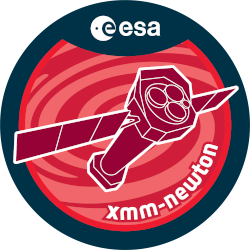

| Proposal ID | 076489 |
| Title | Late X-ray observations to unveil non-Forward Shock components in GRB afterglows |
| Download Data Associated to the proposal | https://nxsa.esac.esa.int/nxsa-sl/servlet/data-action-aio?obsno=0764890201 |
| DOI | https://doi.org/10.5270/esa-n7ctiqy |
| Principal Investigator, PI | Dr Massimiliano De Pasquale |
| Abstract | Certain features of Gamma-Ray Bursts (GRBs) are hard to explain in the contextof the Forward Shock (FS) model. Specifically, X-ray light curves of a few GRBafterglows show a steep drop not seen in the optical. A solution is that theearly X-ray emission is of internal origin, possibly powered by a newly bornmagnetar. When this ceases, the X-ray emission drops. The optical is entirely FSemission. If this model holds true, the late X-ray flux should decay similarlyto the optical, when the FS emission prevails. We test this scenario, with lateobservations of 2 Swift GRBs. Measuring the X-ray flux we can infer the ejectaenergy and how the magnetar central engine distributes the energy of the eventinto different channels. The predicted flux, too faint for Swift, requires XMM-Newton observations. |
| Publications |
|
| Instrument | EMOS1, EMOS2, EPN, OM, RGS1, RGS2 |
| Temporal Coverage | 2017-12-14T06:46:07Z/2017-12-18T01:08:16Z |
| Version | 17.56_20190403_1200 |
| Mission Description | The European Space Agencys (ESA) X-ray Multi-Mirror Mission (XMM-Newton) was launched by an Ariane 504 on December 10th 1999. XMM-Newton is ESAs second cornerstone of the Horizon 2000 Science Programme. It carries 3 high throughput X-ray telescopes with an unprecedented effective area, and an optical monitor, the first flown on a X-ray observatory. The large collecting area and ability to make long uninterrupted exposures provide highly sensitive observations. Since Earths atmosphere blocks out all X-rays, only a telescope in space can detect and study celestial X-ray sources. The XMM-Newton mission is helping scientists to solve a number of cosmic mysteries, ranging from the enigmatic black holes to the origins of the Universe itself. Observing time on XMM-Newton is being made available to the scientific community, applying for observational periods on a competitive basis. |
| Creator Contact | https://www.cosmos.esa.int/web/xmm-newton/xmm-newton-helpdesk |
| Date Published | 2019-01-09T23:00:00Z |
| Last Update | 2025-08-04 |
| Keywords | "xray flux", "xray light curves", "born magnetar", "ejecta energy", "xray emission", "XMM", "late xray", "swift grbs", "late xray flux", "fs emission prevails", "xmm newton", "predicted flux", "XMM-Newton", "forward shock components", "xray emission drops", "model holds", "grb afterglows", "internal origin", "fs emission" |
| Publisher And Registrant | European Space Agency |
| Credit Guidelines | European Space Agency, Dr Massimiliano De Pasquale, 2019, 'Late X-ray observations to unveil non-Forward Shock components in GRB afterglows', 17.56_20190403_1200, European Space Agency, https://doi.org/10.5270/esa-n7ctiqy |